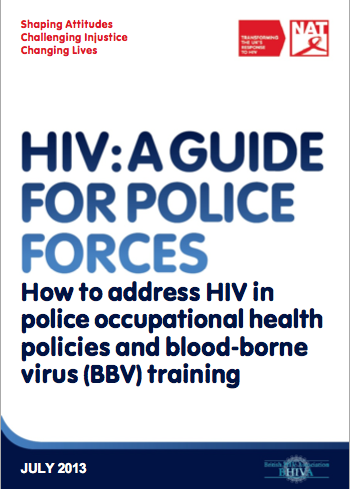
NAT (National AIDS Trust) is calling on all UK police forces to ensure their guidance and policies on HIV are up-to-date – and to use NAT’s new resource ‘HIV: A guide for Police Forces’ for this purpose.
“HIV: A guide for police forces” is endorsed by BHIVA (the British HIV Association) and includes information about how HIV is and isn’t transmitted, what to do if you are exposed to HIV, how to respond to someone with HIV, and information about criminal prosecution for HIV transmission. It also includes an easy-to-use check-list to ensure blood borne virus training and occupational health policies are fit for purpose and up-to-date.
The guide was produced in response to a review of a sample of policies and guidelines from 15 police constabularies out of the 50 in the UK, revealed in a 2012 report. NAT found some forces wrongly cited spitting, scratching, urine, sharing toothbrushes and handling or lifting of people as routes to transmission and also found policies recommending the use of “spit hoods” to protect police from HIV transmission, or stating that people living with HIV and in custody should be held separately and that interviews should be conducted through cell doors or cell door hatches.
The guide is especially targeted at police occupational health trainers, health and safety officers and medical advisers in police forces to improve existing HIV training and guidance. Advocates working with police in jurisdictions around the world may also find this guide useful as a way to encourage the police to update their training and improve the way they treat people living with HIV.
“By producing this guidance we have given police forces the information and evidence they need to ensure their policies and procedures on dealing with HIV are up-to-date and non-stigmatising and to help reduce unnecessary worry about HIV transmission amongst police officers. We are now calling on them to make sure it is put into practice.”
Deborah Jack, Chief Executive of NAT